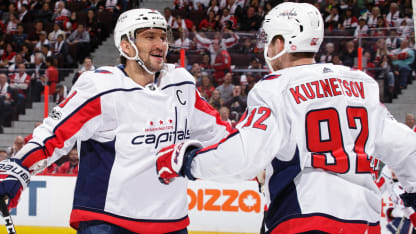However, the first hat trick actually took place in a cricket match.
In 1858, bowler H.H. Stephenson, playing for an all-England squad against a team from Hallam, South Yorkshire, took three consecutive wickets at Hyde Park Cricket Grounds in Sheffield -- meaning that he hit the wooden stakes behind the batter three consecutive times. A collection was taken up and used to buy a hat that was presented to Stephenson in recognition of his accomplishment.
A hat trick as hockey fans know it comes when a player scores three goals in a game, usually earning him a cascade of hats thrown onto the ice by fans (especially if the player is on the home team). A natural hat trick is when a player scores three consecutive goals in a game.
But there are conflicting stories as to how the term became popularized in professional hockey.
Though "hat trick" was used in some newspapers during the 1930s and early 1940s to describe a player scoring three goals in a game, the Hockey Hall of Fame says the genesis of the term came when a Toronto businessman named Sammy Taft promoted his business by offering a hat to any player who scored three goals during an NHL game in Toronto.
Alex Kaleta, a speedy forward with the Chicago Black Hawks (two words at the time), went into Taft's shop on Jan. 26, 1946, and took a liking to a fedora but, the story goes, he didn't have enough money to buy it. Taft offered Kaleta the hat for free if Kaleta scored three goals that night against the Toronto Maple Leafs.
Kaleta did that, and then some; he scored four goals in a 6-5 loss at Maple Leaf Gardens. One day - and a lot of media attention to "Alex Kaleta's hat trick" later - the hat was his.
"There was no rhyme or reason to it," Taft told The Hockey News in 1992. "I just, for some reason, said 'You go out there and score three goals tonight and I'll give you the hat.' Sure enough, he went out there and knocked in three goals."


















